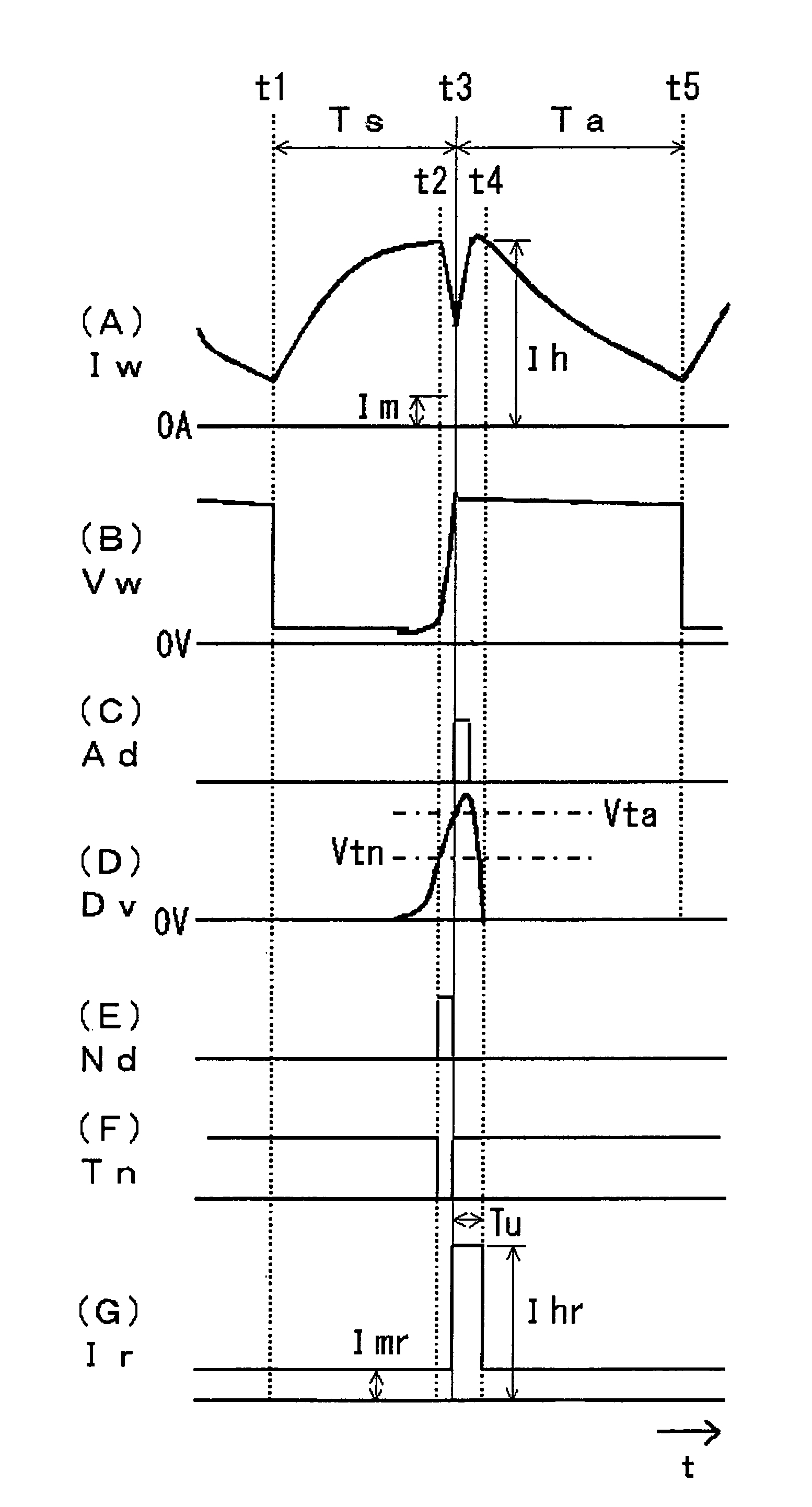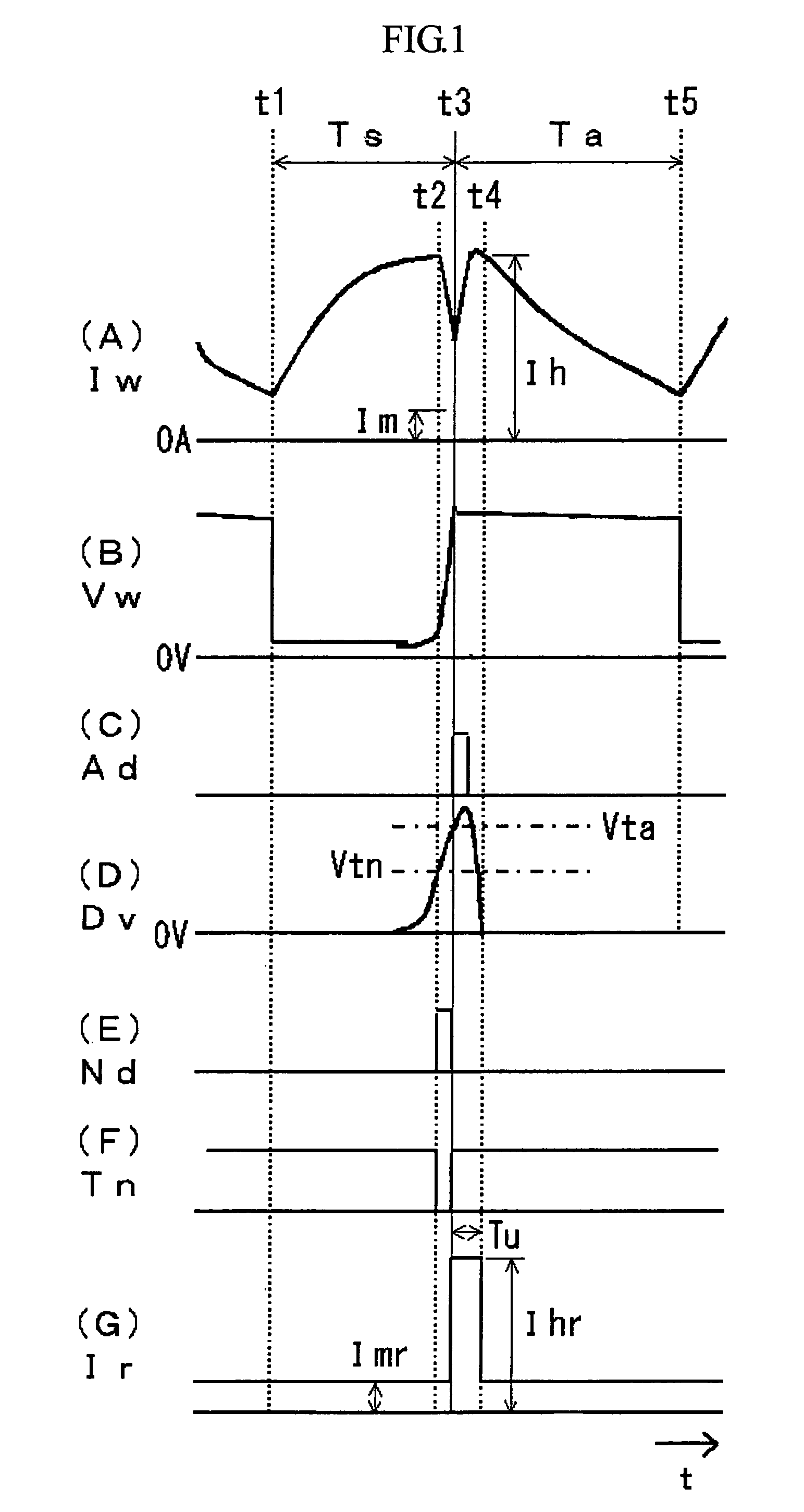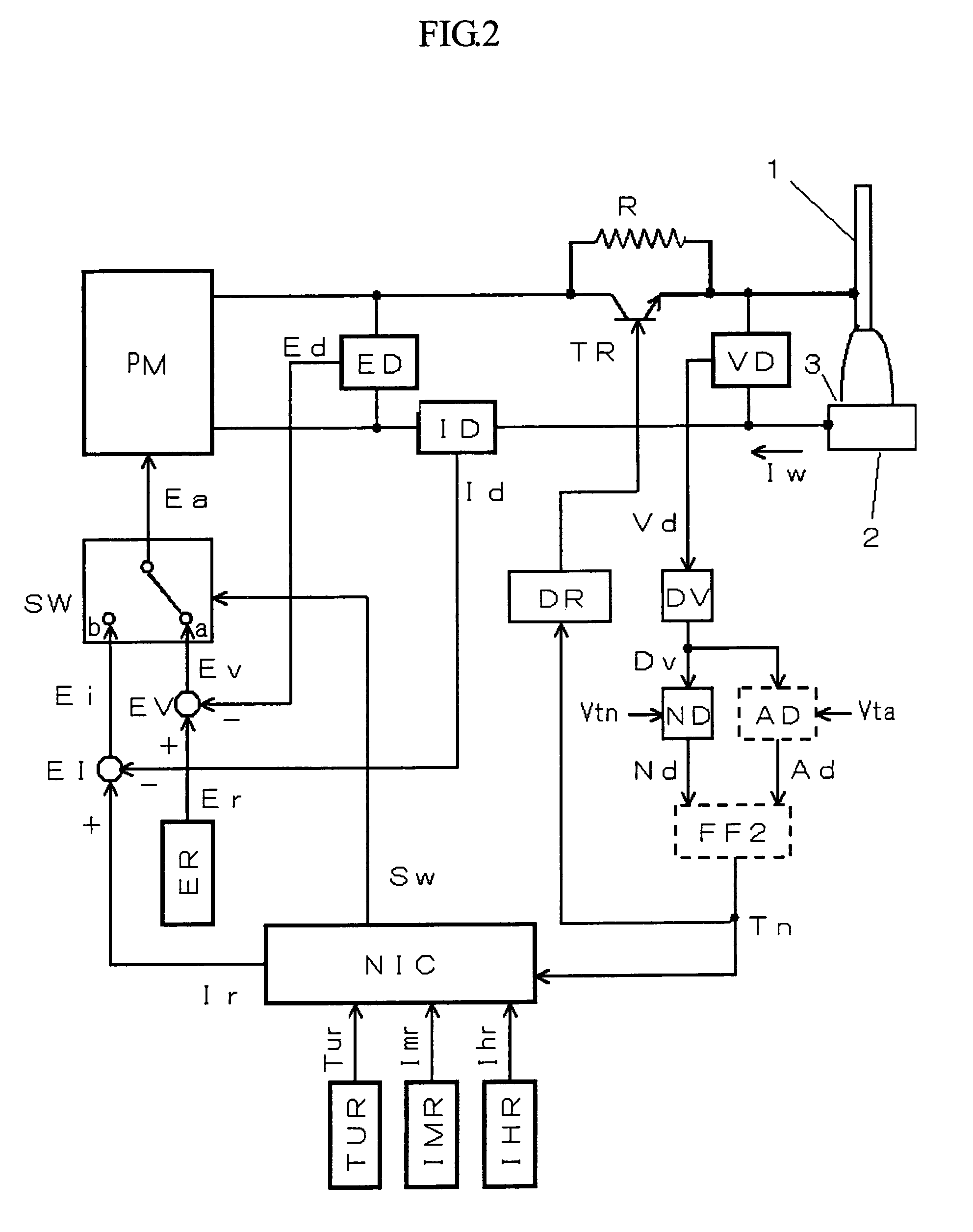Squeezing detection control method for consumable electrode arc welding
a detection control and consumable electrode technology, applied in arc welding equipment, welding equipment, manufacturing tools, etc., can solve the problems of delay time td often affecting welding stability, wide range of differences, and delay of a few tens of microseconds
- Summary
- Abstract
- Description
- Claims
- Application Information
AI Technical Summary
Benefits of technology
Problems solved by technology
Method used
Image
Examples
embodiment 1
[0044]FIG. 1 is a timing chart depicting a squeezing detection control method in consumable electrode arc welding according to a first embodiment or Embodiment 1 of the present invention. Graph 1(A) shows the waveform of a welding current Iw, Graph 1(B) the waveform of a welding voltage Vw, Graph 1(C) the waveform of an arc recurrence determination signal Ad, Graph 1(D) the waveform of a voltage differentiation signal Dv, Graph1(E) the waveform of a squeeze detection signal Nd, Graph 1(F) the waveform of a squeeze detection period signal Tn, and Graph 1(G) the waveform of an electric-current setting signal Ir. FIG. 1 corresponds to FIG. 8 described above. It should be noted that the short circuit determination signal Sd in Graph 8(C) is replaced by the arc recurrence determination signal Ad in Graph 1(C). Like FIG. 8, FIG. 1 shows a case in which the arc restrikes immediately after a squeezed droplet is detected. Hereinafter, reference will be made to FIG. 1.
[0045]When a squeezed dr...
embodiment 2
[0050]FIG. 3 shows a timing chart depicting a squeezing detection control method in consumable electrode arc welding according to a second embodiment or Embodiment 2 of the present invention. Graphs 3(A)-3(G) show different patterns of the signals in FIG. 1 described above. FIG. 3 shows a case in which the squeeze period (i.e. the period from squeeze detection to arc recurrence) is relatively short. In general, the squeeze period can be divided into two categories: normal length squeeze period and relatively short length squeeze period. The normal length of the squeeze period may be a few hundreds of microseconds, whereas the relatively short length may be no greater than 100 μs, which is the case with Embodiment 2. If middle-to-high current range welding has a relatively short squeeze period, it may be better to maintain the welding current Iw at the present level rather than to decrease it rapidly for the purpose of ensuring stable welding.
[0051]Specifically, when a squeezed dropl...
PUM
| Property | Measurement | Unit |
|---|---|---|
| current Iw | aaaaa | aaaaa |
| resistance | aaaaa | aaaaa |
| squeeze current | aaaaa | aaaaa |
Abstract
Description
Claims
Application Information
 Login to View More
Login to View More - R&D
- Intellectual Property
- Life Sciences
- Materials
- Tech Scout
- Unparalleled Data Quality
- Higher Quality Content
- 60% Fewer Hallucinations
Browse by: Latest US Patents, China's latest patents, Technical Efficacy Thesaurus, Application Domain, Technology Topic, Popular Technical Reports.
© 2025 PatSnap. All rights reserved.Legal|Privacy policy|Modern Slavery Act Transparency Statement|Sitemap|About US| Contact US: help@patsnap.com



